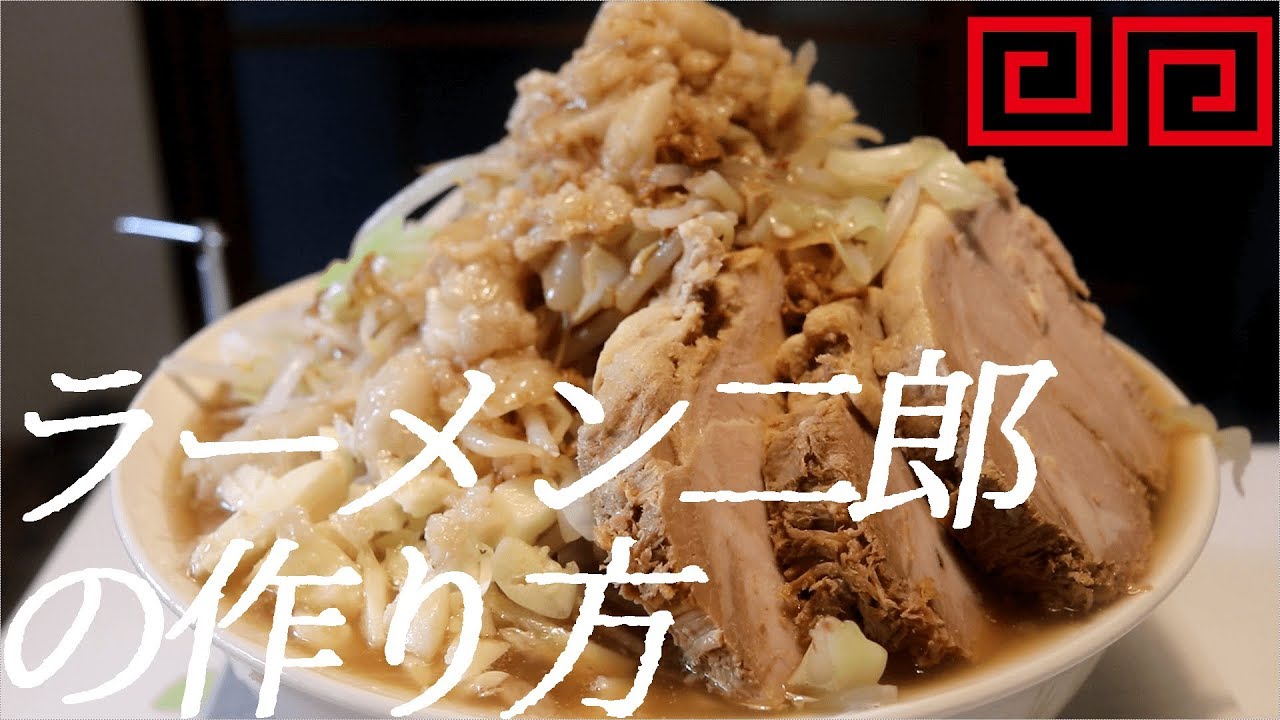
Source: YouTube: 二郎ラーメンの作り方。35杯目【飯テロ】
Can’t visit Japan? Videos teach you how to make authentic ramen just like popular ramen chains
- Tags:
- abura soba / authentic / Iekei Ramen / Jiro Ramen / Ramen / ramen chain / Tsukemen / Tutorial
Related Article
-
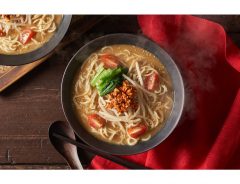
Japanese Michelin recognized ramen to be released in instant packs
-
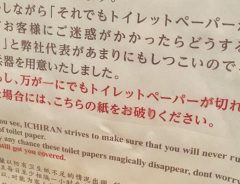
Ramen Chain’s Emergency Toilet Paper Policy Shows The Depths Of Japanese Hospitality
-
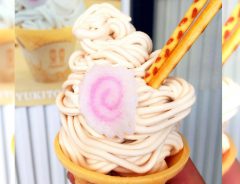
This Soy Sauce-Flavored Soft Serve Will Let You Have Ramen For Dessert
-

Tokyo’s Fruitiest Ramen: PaPaPaPaPine!
-

Ramen-ize Your Room With This Mouth-Watering Ramen Poster!
-
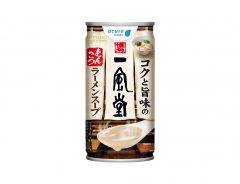
Drinkable Ippudo tonkotsu pork ramen broth released in Japanese vending machines


YouTube channel おうち麺TV. o-uchi men TV ("noodles at home TV") was launched to convey the fun of ramen making and show people how to make authentic ramen at home.
Most people eat ramen as instant noodles or if they're lucky to have one nearby, at a restaurant or ramen shop. There are few people who make their own ramen completely from scratch (even the noodles).
A lot of hard work goes into making a bowl of ramen. But for those who really love ramen, it would certainly be worth the effort if only they knew the ingredients and the exact process required to do it.
That's where O-uchi men TV can help!
You may need to talk to your local butcher shop to get things like pork spine, knee bones and back fat, and you may need to settle on a very close alternative when it comes to the exact brand of flour they recommend, but otherwise, you should be able to find everything you need. Just be sure to have a big pot to make soup!
Recreate the taste of Ramen Jiro at home
ラーメン二郎 Ramen Jiro, which has its main branch in the Mita neighborhood of Tokyo and around 40 locations across Japan, is a favorite among students and office workers. Famous for its tonkotsu shoyu soup and its calorie-rich portions with thick slices of braised pork, pork back fat and mounds of cabbage and bean sprouts, Ramen Jiro has a core fanbase of passionate fans, called Jirolians.
Even if you can't make a trip to Japan, you can still re-create Jiro-style ramen at home with the video below!
For those of you who don't know Japanese, we've translated as much as we could based on the video's description text and the instructions displayed during the video. Please note that the instructions below are not officially provided by the channel and are only intended to serve as a reference.
Ingredients
Soup:
150 g (5.3 oz) 背ガラ pork backbone / 400 g (14.1 oz) ゲンコツ pork knee bones / 600 g (1.3 lbs) 背油 pork back fat / 2 kg (4.4 lbs) 豚ロース pork loin / キャベツの芯 one cabbage core / ねぎ頭 a big welsh onion with many stalks, green parts only / にんにく one garlic bulb, peeled and cut in half / たまねぎ half of an onion / しょうが 3 very thickly cut slices of fresh ginger
Tare sauce:
180 cc (3/4 cup) しょうゆ soy sauce / 60 cc (1/4 cup) みりん mirin sweet cooking sake / garlic / 4 tbsp MSG powder
Noodles:
6 g (1 tsp) かんすい lye water / 6 g (0.2 oz) 塩 salt / 186 cc (6.3 fl oz) 水 water / 600 g (1.3 lbs) オーション Nisshin Oshon Flour (a high-protein bread flour with 0.52% ash content and 13% crude protein)
Toppings:
キャベツ cabbage / もやし bean sprouts / にんにく garlic / 背油 pork back fat / ブタ char siu (made in recipe) / 生卵 raw egg (optional)
Instructions
Parboil pork backbones and knee bones then remove from boiling water. Drain, then return to a pot of fresh water. Add back fat, bring to a boil then lower to medium heat, periodically removing scum from the surface. (If you have leftover back fat, cut it into chunks and store it in freezer bags). Tie up pork loin with butcher's twine. (If your pot is too small, transfer ingredients to a larger pot). Add pork loin to pot. Simmer for 3 hours. Add cabbage, welsh onion, onion, garlic, and ginger. When the pork back fat has become soft and gelatinous, remove it from pot. Smash fat in a bowl to break it down, optionally keeping some larger chunks (Jirolians will recognize these as はんぺん hanpen, one of which is usually placed on top of the vegetable mound). If needed, add more water to the pot. Remove welsh onion.
To make the char siu, in a separate pot, mix soy sauce, mirin, and MSG powder (adjust to taste). Bring to a boil, then remove from heat. Transfer to a large, sturdy ziplock bag. Add garlic cloves (about 3 or 4 cloves, cut in half) and the pork loin from the big pot which should be kept simmering for another 3 hours. Let ingredients marinate in the bag for 2 hours, then remove pork loin. Keep the tare sauce and discard the garlic.
Pass all of the contents of the big pot through a sieve to obtain the soup. Discard solid ingredients.
To make noodles, put flour in a large bowl or pot, then add a mixture of water, lye water and salt. Blend well to form the dough, knead well, shape into a squat loaf-like shape then wrap in plastic wrap and let sit for an hour. Cut the 'loaf' into four or five chunks. For each chunk of dough, knead with a rolling pin. The dough will be hard, so use your body weight. If you have a pasta maker, press them well until they're about 1/2 inch thick (store the long pieces by rolling them up on a suspended rolling pin), then cut them into noodles with a pasta maker. Finally, cut the noodles into appropriate lengths. This should result in 31% water content 太麺 futomen thick-cut ramen noodles. Place noodles in a large ziplock bag and sit them in the fridge for 24 hours.
Slice cabbage and lightly boil together with bean sprouts. Remove twine from char siu block and cut into thick slices. In a small pot, reheat back fat. If you're going to also enjoy dipping your noodles in raw egg, as some Jirolians do, crack one into a bowl and set aside. Remove the portion of noodles you want for your meal and lightly squeeze them, being careful since the low water content makes them prone to breaking, before cooking them in a pot of boiling water to desired consistency.
To finish up and serve, heat your serving bowl, add some tare first, add the soup (reheated if necessary), cooked noodles, then top with drained vegetables (adding a large amount makes it 野菜マシマシ yasai mashimashi "extra veg"), coarsely chopped garlic cloves, three slices of char siu and back fat.
The video has been viewed more than 2.8 million times at the time of writing, with comments such as "the level of reproduction is so high," "I didn't know it was so hard to make ramen," and "I'm surprised they even made noodles from scratch."
The following video shows you how to make 家系ラーメン Iekei style ramen, originating from the 吉村家 Yoshimura-ya ramen restaurant in Yokohama.
Iekei ramen is characterized by its thick soup and thick noodles. Of course, this one is also handmade from scratch.
The noodles are made by using a pasta machine and letting them sit for three days. One of the highlights of this video is the creator's evaluation of his ramen when he's done.
The last video we'd like to introduce is a soupless 油そばつけ麺 Abura Soba / Tsukemen noodles.
The end result can be enjoyed either as Abura Soba (pre-mixed with tare and oil) or Tsukemen (dipped in a separate bowl of tare).
If you watch O-uchi men TV when you are hungry, you'll definitely want to eat ramen!
There are many other types of ramen introduced on the channel.
Moreover, for a monthly fee of 290 yen, registered members can watch the "ramen research program," through which they develop original recipes based on viewers' opinions.
Even if you have no intention of making ramen at home, this channel is a feast for your eyes!